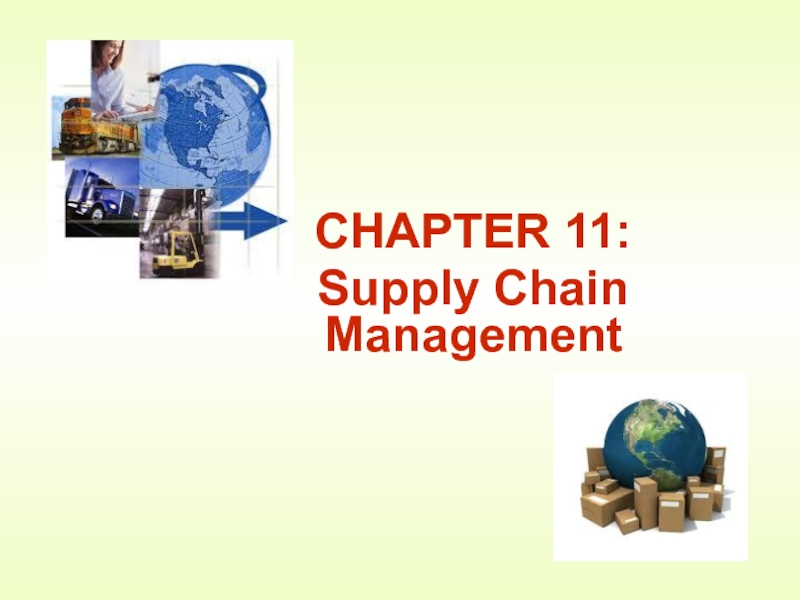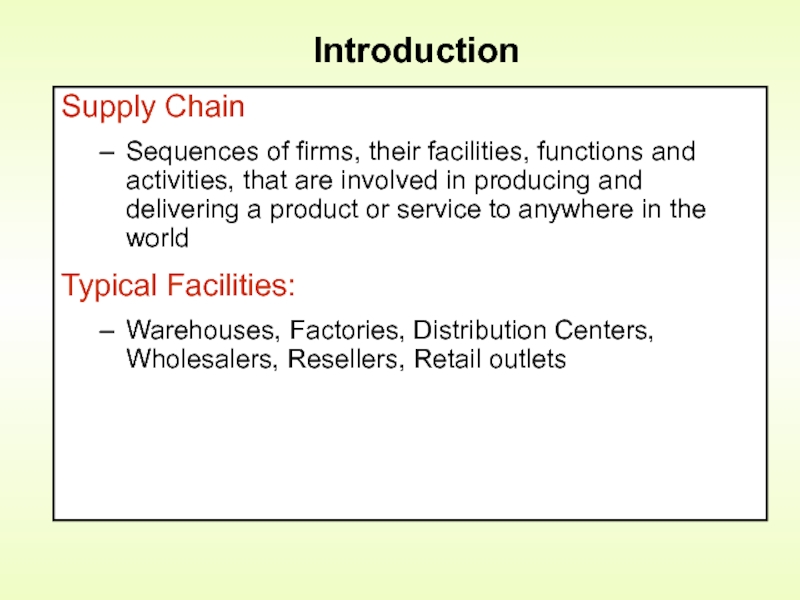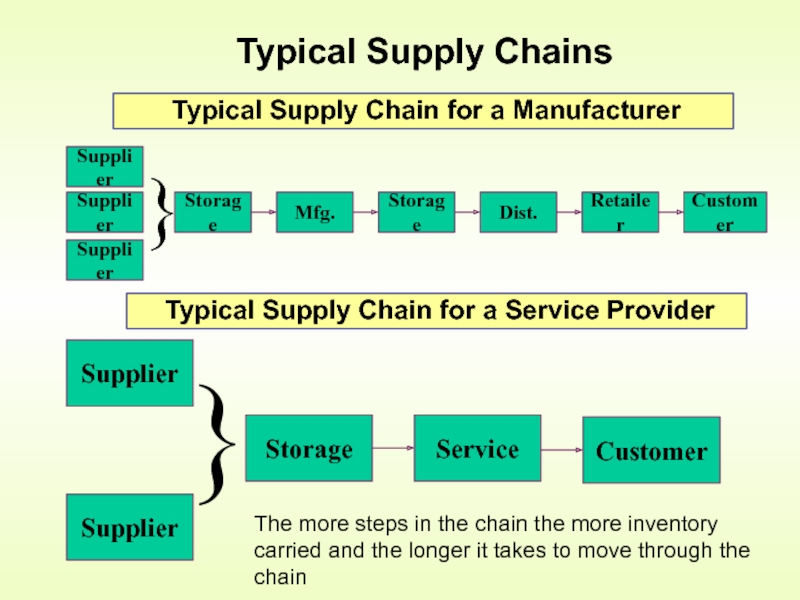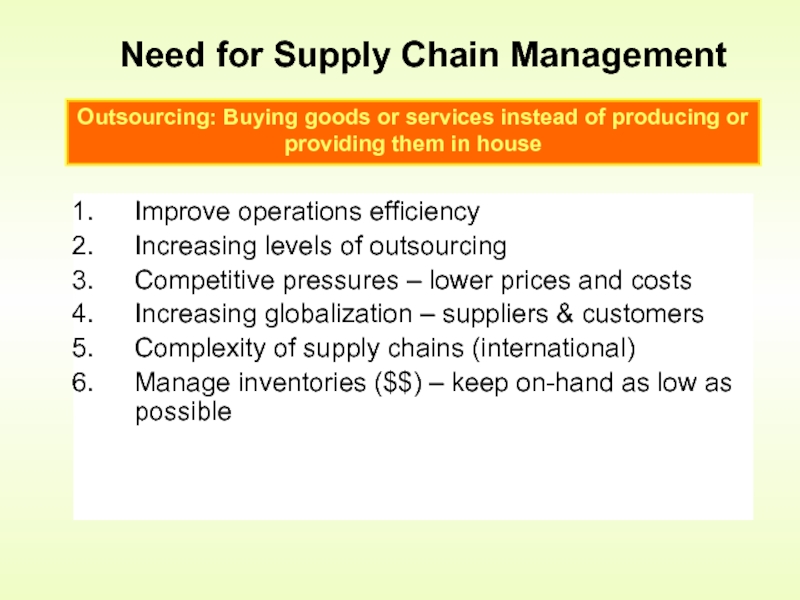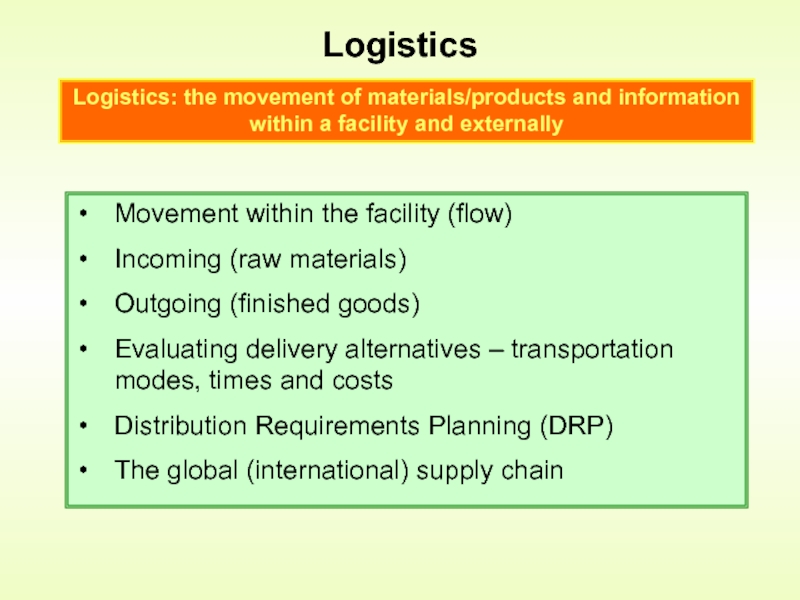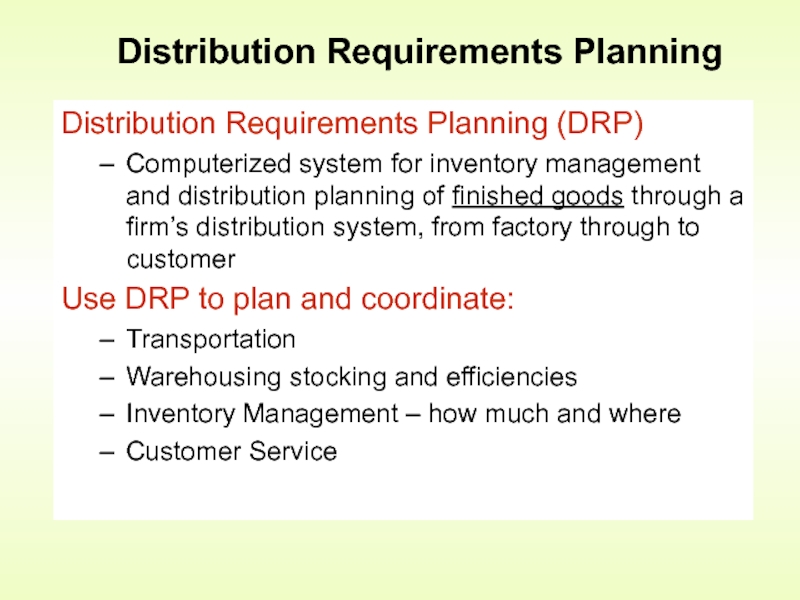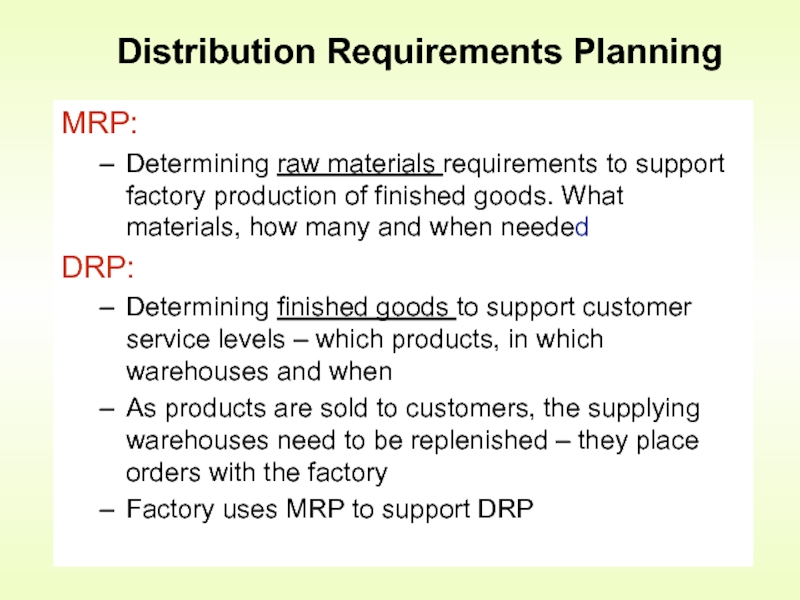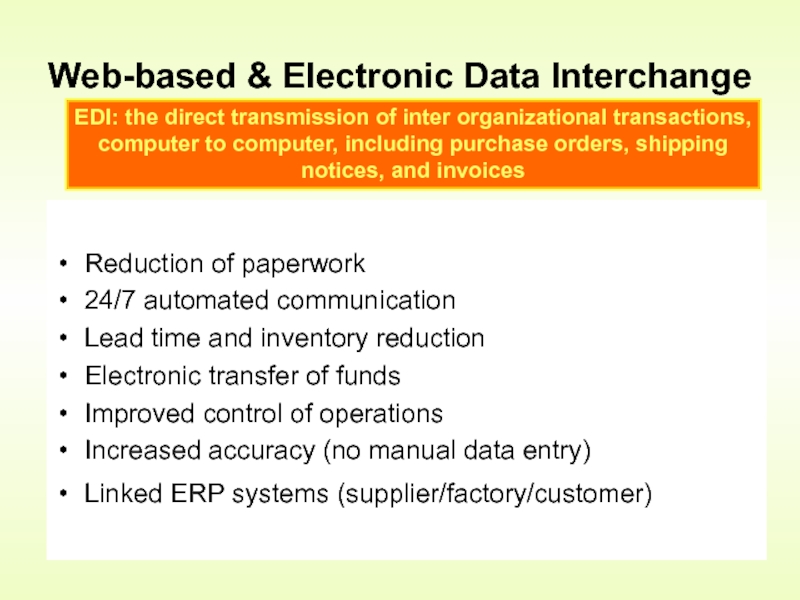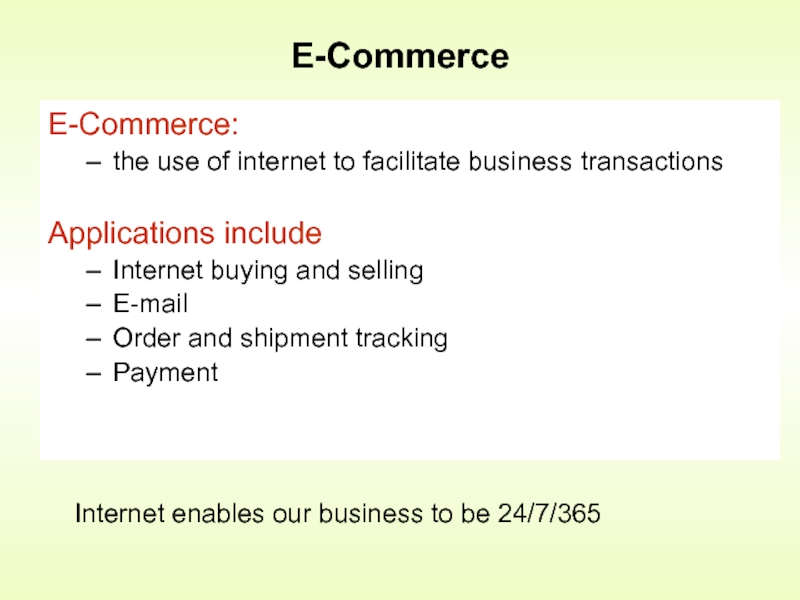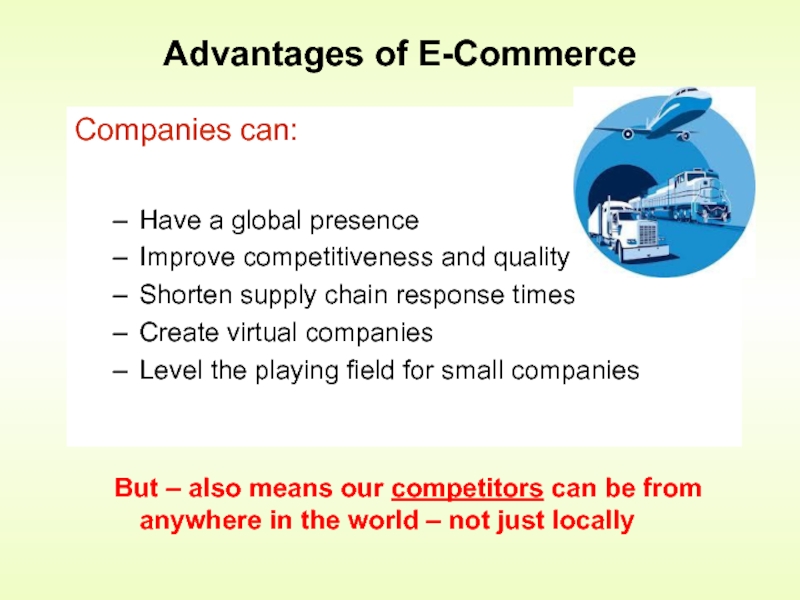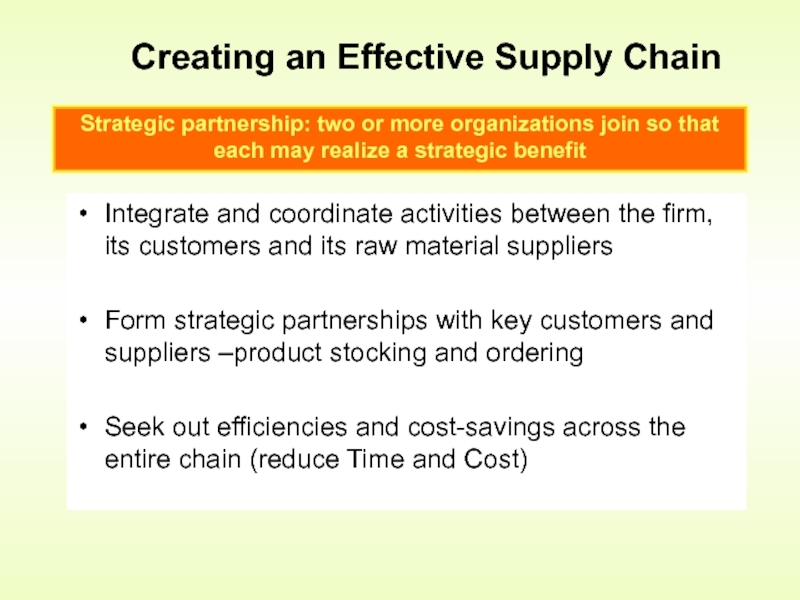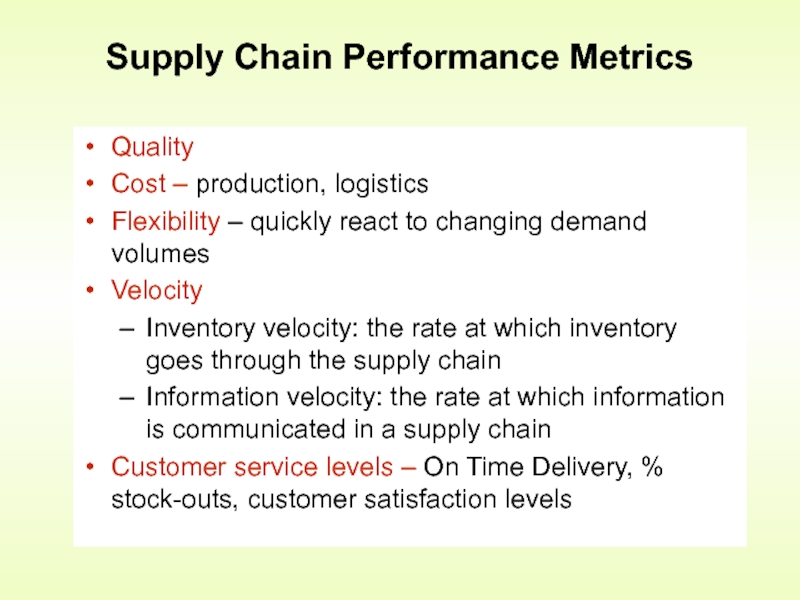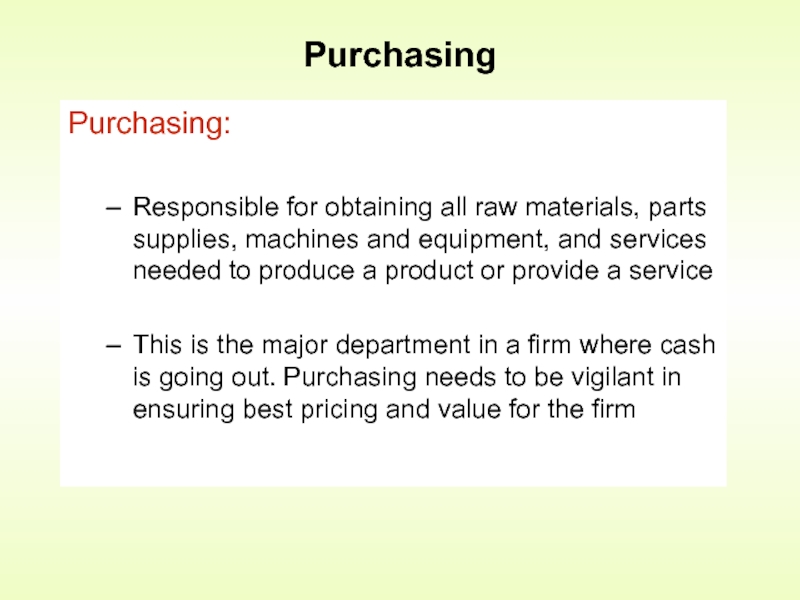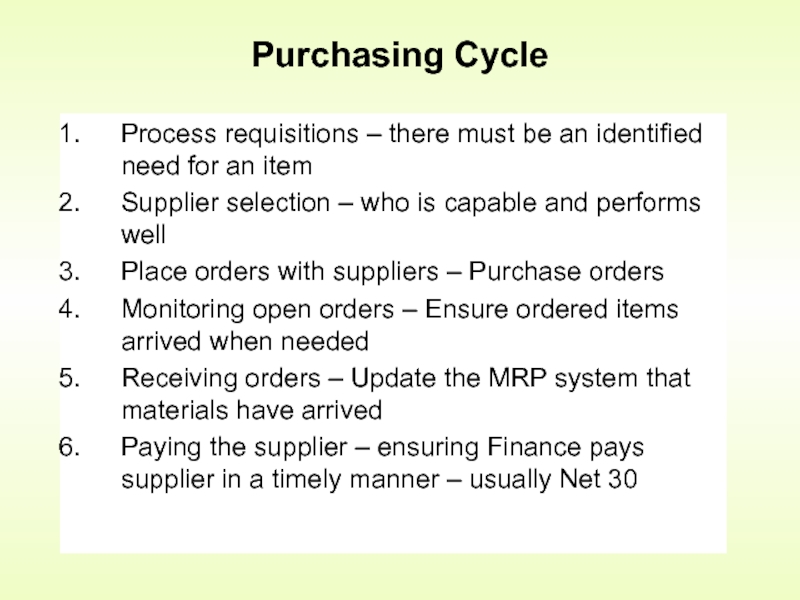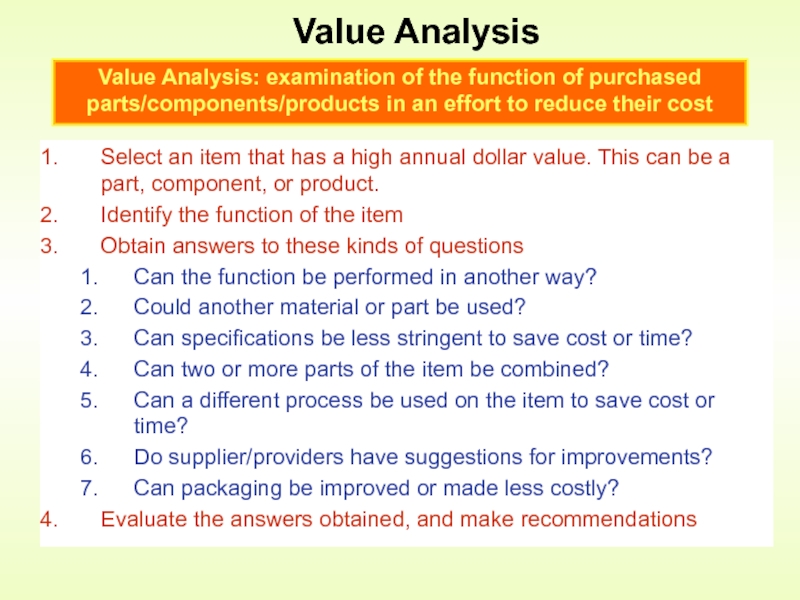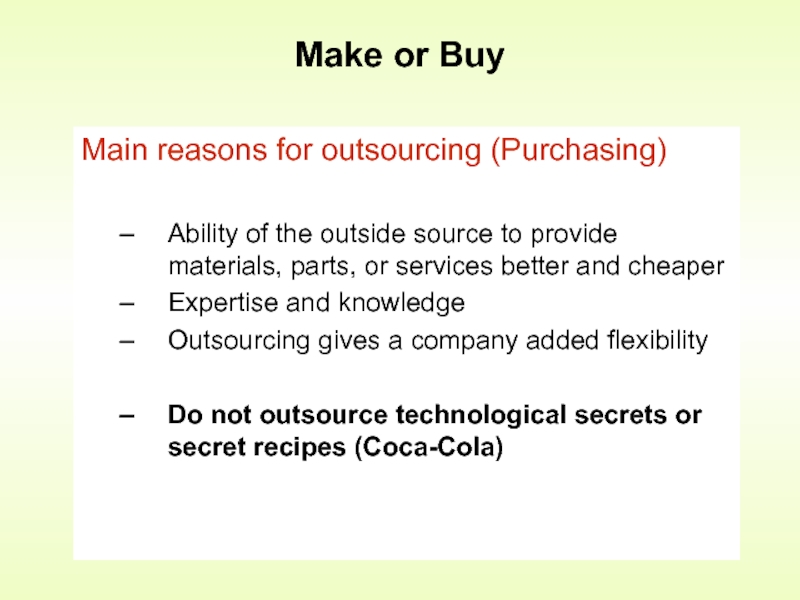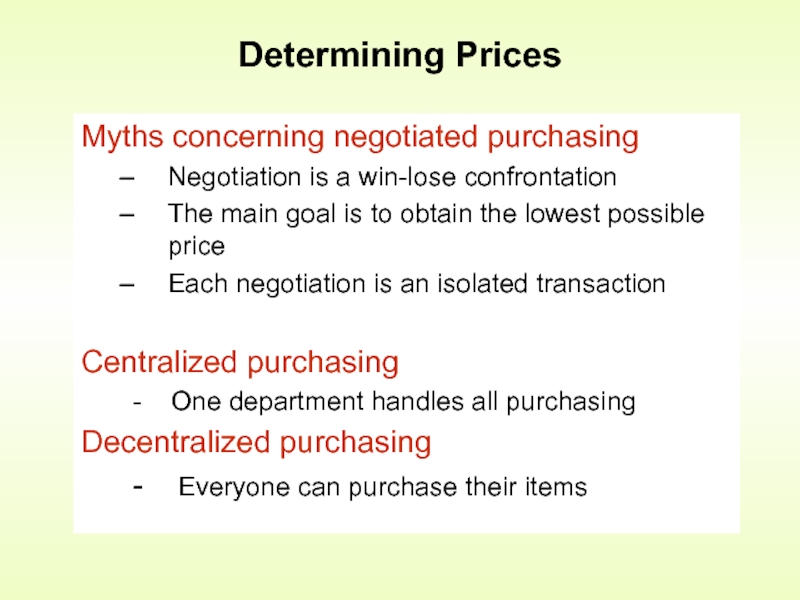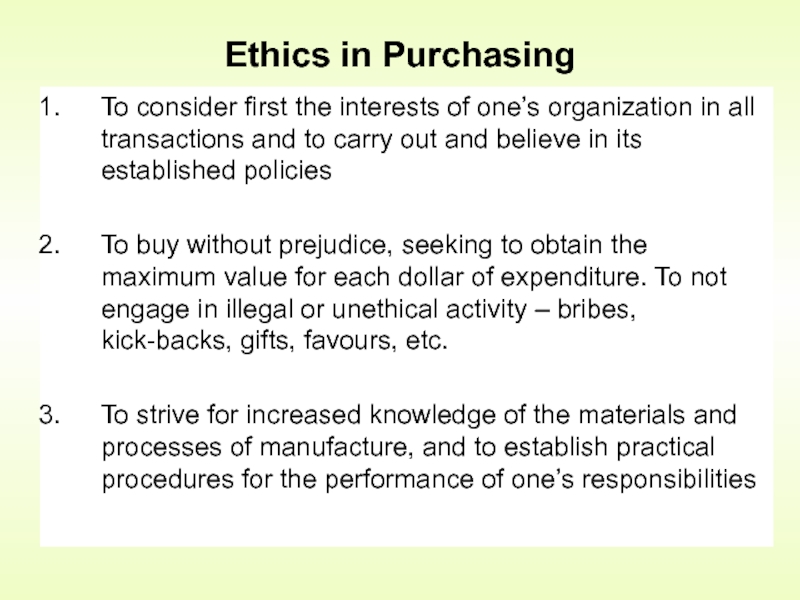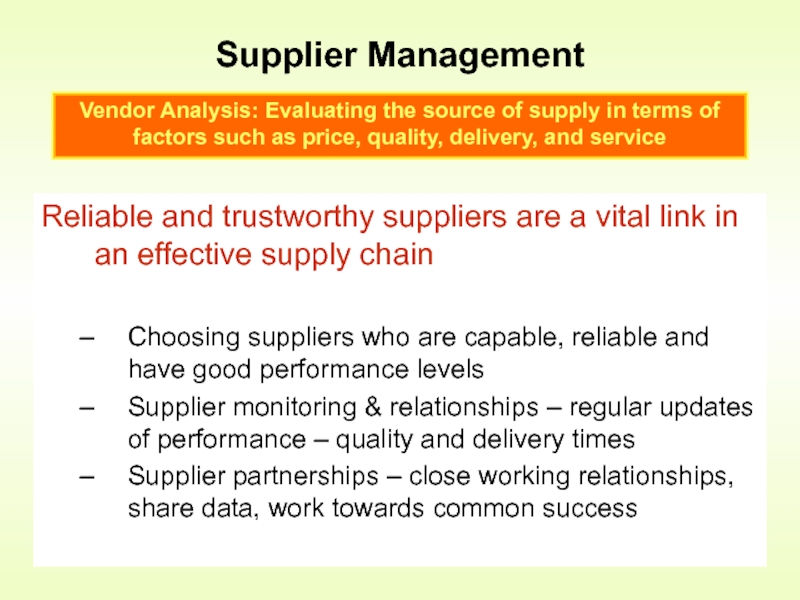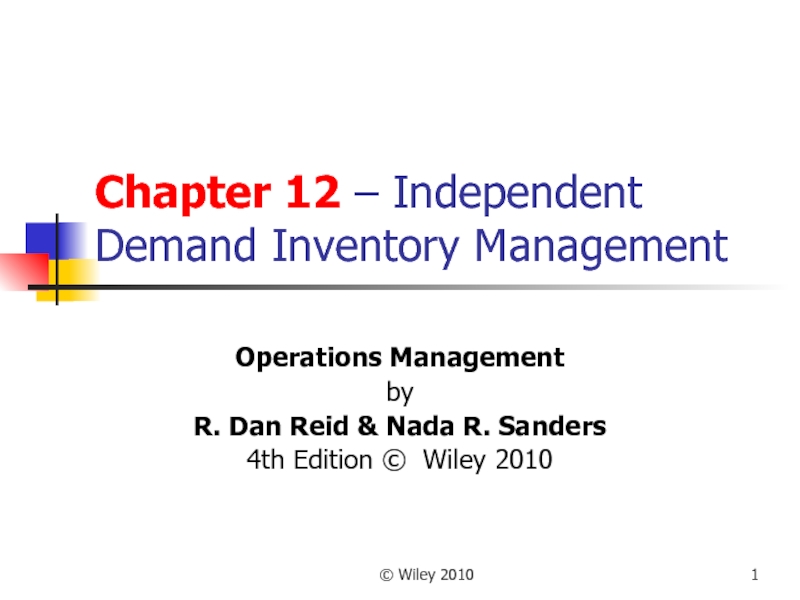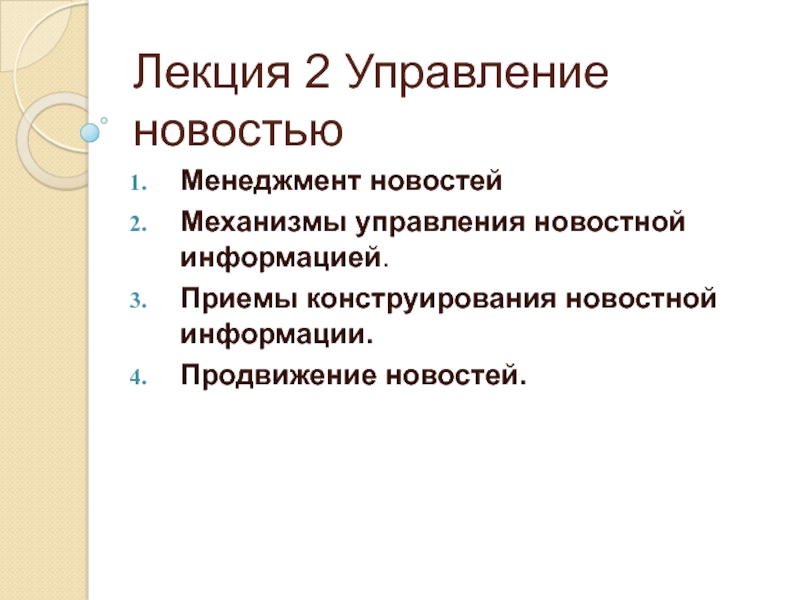- Главная
- Разное
- Дизайн
- Бизнес и предпринимательство
- Аналитика
- Образование
- Развлечения
- Красота и здоровье
- Финансы
- Государство
- Путешествия
- Спорт
- Недвижимость
- Армия
- Графика
- Культурология
- Еда и кулинария
- Лингвистика
- Английский язык
- Астрономия
- Алгебра
- Биология
- География
- Детские презентации
- Информатика
- История
- Литература
- Маркетинг
- Математика
- Медицина
- Менеджмент
- Музыка
- МХК
- Немецкий язык
- ОБЖ
- Обществознание
- Окружающий мир
- Педагогика
- Русский язык
- Технология
- Физика
- Философия
- Химия
- Шаблоны, картинки для презентаций
- Экология
- Экономика
- Юриспруденция
Supply chain management. Chapter 11 презентация
Содержание
- 1. Supply chain management. Chapter 11
- 2. Introduction Supply Chain Sequences of firms, their
- 3. Typical Supply Chains Typical Supply
- 4. Improve operations efficiency Increasing levels of outsourcing
- 5. Logistics Movement within the facility (flow) Incoming
- 6. Distribution Requirements Planning (DRP) Computerized system for
- 7. MRP: Determining raw materials requirements to support
- 8. Reduction of paperwork 24/7 automated communication
- 9. E-Commerce: the use of internet to
- 10. Companies can: Have a global presence
- 11. Integrate and coordinate activities between the firm,
- 12. Quality Cost – production, logistics Flexibility
- 13. Supply Chain Benefits & Drawbacks
- 14. Purchasing: Responsible for obtaining all raw
- 15. Process requisitions – there must be an
- 16. Value Analysis Value Analysis: examination of the
- 17. Main reasons for outsourcing (Purchasing) Ability
- 18. Myths concerning negotiated purchasing Negotiation is a
- 19. Ethics in Purchasing To consider first the
- 20. Reliable and trustworthy suppliers are a vital
Слайд 2Introduction
Supply Chain
Sequences of firms, their facilities, functions and activities, that are
Typical Facilities:
Warehouses, Factories, Distribution Centers, Wholesalers, Resellers, Retail outlets
Слайд 3 Typical Supply Chains
Typical Supply Chain for a Manufacturer
Typical
The more steps in the chain the more inventory carried and the longer it takes to move through the chain
Слайд 4Improve operations efficiency
Increasing levels of outsourcing
Competitive pressures – lower prices and
Increasing globalization – suppliers & customers
Complexity of supply chains (international)
Manage inventories ($$) – keep on-hand as low as possible
Need for Supply Chain Management
Outsourcing: Buying goods or services instead of producing or providing them in house
Слайд 5Logistics
Movement within the facility (flow)
Incoming (raw materials)
Outgoing (finished goods)
Evaluating delivery alternatives
Distribution Requirements Planning (DRP)
The global (international) supply chain
Logistics: the movement of materials/products and information within a facility and externally
Слайд 6Distribution Requirements Planning (DRP)
Computerized system for inventory management and distribution planning
Use DRP to plan and coordinate:
Transportation
Warehousing stocking and efficiencies
Inventory Management – how much and where
Customer Service
Distribution Requirements Planning
Слайд 7MRP:
Determining raw materials requirements to support factory production of finished goods.
DRP:
Determining finished goods to support customer service levels – which products, in which warehouses and when
As products are sold to customers, the supplying warehouses need to be replenished – they place orders with the factory
Factory uses MRP to support DRP
Distribution Requirements Planning
Слайд 8
Reduction of paperwork
24/7 automated communication
Lead time and inventory reduction
Electronic transfer of
Improved control of operations
Increased accuracy (no manual data entry)
Linked ERP systems (supplier/factory/customer)
Web-based & Electronic Data Interchange
EDI: the direct transmission of inter organizational transactions, computer to computer, including purchase orders, shipping notices, and invoices
Слайд 9E-Commerce:
the use of internet to facilitate business transactions
Applications include
Internet buying
Order and shipment tracking
Payment
E-Commerce
Internet enables our business to be 24/7/365
Слайд 10Companies can:
Have a global presence
Improve competitiveness and quality
Shorten supply chain response
Create virtual companies
Level the playing field for small companies
But – also means our competitors can be from anywhere in the world – not just locally
Advantages of E-Commerce
Слайд 11Integrate and coordinate activities between the firm, its customers and its
Form strategic partnerships with key customers and suppliers –product stocking and ordering
Seek out efficiencies and cost-savings across the entire chain (reduce Time and Cost)
Creating an Effective Supply Chain
Strategic partnership: two or more organizations join so that each may realize a strategic benefit
Слайд 12Quality
Cost – production, logistics
Flexibility – quickly react to changing demand
Velocity
Inventory velocity: the rate at which inventory goes through the supply chain
Information velocity: the rate at which information is communicated in a supply chain
Customer service levels – On Time Delivery, % stock-outs, customer satisfaction levels
Supply Chain Performance Metrics
Слайд 14Purchasing:
Responsible for obtaining all raw materials, parts supplies, machines and equipment,
This is the major department in a firm where cash is going out. Purchasing needs to be vigilant in ensuring best pricing and value for the firm
Purchasing
Слайд 15Process requisitions – there must be an identified need for an
Supplier selection – who is capable and performs well
Place orders with suppliers – Purchase orders
Monitoring open orders – Ensure ordered items arrived when needed
Receiving orders – Update the MRP system that materials have arrived
Paying the supplier – ensuring Finance pays supplier in a timely manner – usually Net 30
Purchasing Cycle
Слайд 16Value Analysis
Value Analysis: examination of the function of purchased parts/components/products in
Select an item that has a high annual dollar value. This can be a part, component, or product.
Identify the function of the item
Obtain answers to these kinds of questions
Can the function be performed in another way?
Could another material or part be used?
Can specifications be less stringent to save cost or time?
Can two or more parts of the item be combined?
Can a different process be used on the item to save cost or time?
Do supplier/providers have suggestions for improvements?
Can packaging be improved or made less costly?
Evaluate the answers obtained, and make recommendations
Слайд 17Main reasons for outsourcing (Purchasing)
Ability of the outside source to provide
Expertise and knowledge
Outsourcing gives a company added flexibility
Do not outsource technological secrets or secret recipes (Coca-Cola)
Make or Buy
Слайд 18Myths concerning negotiated purchasing
Negotiation is a win-lose confrontation
The main goal is
Each negotiation is an isolated transaction
Centralized purchasing
- One department handles all purchasing
Decentralized purchasing
- Everyone can purchase their items
Determining Prices
Слайд 19Ethics in Purchasing
To consider first the interests of one’s organization in
To buy without prejudice, seeking to obtain the maximum value for each dollar of expenditure. To not engage in illegal or unethical activity – bribes, kick-backs, gifts, favours, etc.
To strive for increased knowledge of the materials and processes of manufacture, and to establish practical procedures for the performance of one’s responsibilities
Слайд 20Reliable and trustworthy suppliers are a vital link in an effective
Choosing suppliers who are capable, reliable and have good performance levels
Supplier monitoring & relationships – regular updates of performance – quality and delivery times
Supplier partnerships – close working relationships, share data, work towards common success
Supplier Management
Vendor Analysis: Evaluating the source of supply in terms of factors such as price, quality, delivery, and service
